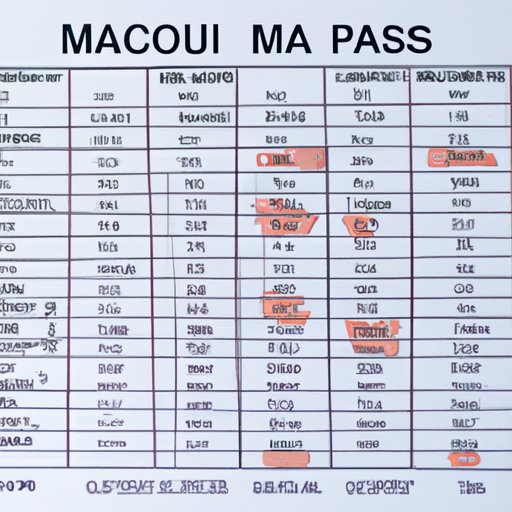Introduction
Macronutrient counting, or “macro counting”, is a popular method of tracking food intake and optimizing health and wellness. It involves monitoring the amounts of carbohydrates, proteins, and fats that you consume each day. By understanding the basics of macro counting, you can create meal plans that meet your nutritional needs and help you reach your health and fitness goals.

Outline the Basics of Macro Counting
Before you start counting macros, it’s important to understand what they are and why they matter. Macros are the three main sources of energy that your body needs to function properly: carbohydrates, proteins, and fats. Each macronutrient provides a specific amount of calories per gram, and the ratio of these nutrients in your diet plays an important role in keeping your body healthy.
To determine your individual macro needs, you must first calculate your total daily calorie requirement. This number is based on factors such as age, gender, activity level, and weight-loss goals. Once you’ve determined your calorie needs, you can then calculate the amounts of carbs, proteins, and fats that you should be consuming each day. Generally, the recommended macronutrient ratios are 45-65% of total calories from carbs, 10-35% from proteins, and 20-35% from fats.
Meal Planning Strategies for Macro Counting
Once you’ve calculated your macros, it’s time to start creating meal plans that meet your nutritional needs. When planning meals, it’s important to focus on macronutrient ratios rather than specific foods. For example, if you’re aiming for a 40/30/30 ratio of carbs, proteins, and fats, you should strive to have each meal contain this ratio of macronutrients.
It’s also important to create meals that are balanced and nutritious. Focus on whole, unprocessed foods such as lean meats, fresh fruits and vegetables, and whole grains. These foods provide essential vitamins and minerals, as well as fiber, which helps keep you feeling full and energized.
Finally, when counting macros, it’s important to track your intake accurately. Use a food journal or app to track your meals and snacks throughout the day. This will help you stay on track and ensure that you’re meeting your macro goals.

Sample Meal Plans for Macro Counting
To give you an idea of what a macro-counting meal plan looks like, here are three sample plans. Each plan contains the same number of calories but different ratios of carbs, proteins, and fats.
Sample Meal Plan #1
Breakfast: 2 eggs, 1 slice of whole wheat toast, and 1 cup of berries (45/30/25)
Lunch: Grilled chicken salad with ½ cup quinoa, ½ cup black beans, and 1 cup of mixed vegetables (40/35/25)
Snack: 1 cup plain Greek yogurt, 1 cup of blueberries, and 1 tablespoon of almond butter (20/50/30)
Dinner: 4 ounces of salmon, ½ cup of brown rice, and 1 cup of steamed broccoli (40/40/20)
Sample Meal Plan #2
Breakfast: 1 cup of oatmeal, 1 banana, and 1 scoop of whey protein powder (60/30/10)
Lunch: Tuna salad wrap with 1 cup of spinach, ½ cup of chickpeas, and 1 tablespoon of olive oil (45/35/20)
Snack: 1 ounce of almonds and 1 cup of carrots (15/15/70)
Dinner: 5 ounces of grilled chicken, 1 cup of cooked quinoa, and 1 cup of roasted Brussels sprouts (45/35/20)
Sample Meal Plan #3
Breakfast: 1 cup of cottage cheese, ½ cup of blueberries, and 1 tablespoon of chia seeds (25/50/25)
Lunch: 3 ounces of turkey breast, 1 cup of cooked brown rice, and 1 cup of steamed kale (60/30/10)
Snack: 2 hard-boiled eggs and 1 cup of grapes (20/30/50)
Dinner: 4 ounces of salmon, 1 sweet potato, and 1 cup of roasted cauliflower (40/40/20)
Conclusion
Macro counting is an effective way to monitor your food intake and optimize your nutrition. By understanding the basics of macro counting and creating balanced meals, you can create meal plans that meet your individual needs and help you reach your health and fitness goals.
(Note: Is this article not meeting your expectations? Do you have knowledge or insights to share? Unlock new opportunities and expand your reach by joining our authors team. Click Registration to join us and share your expertise with our readers.)
